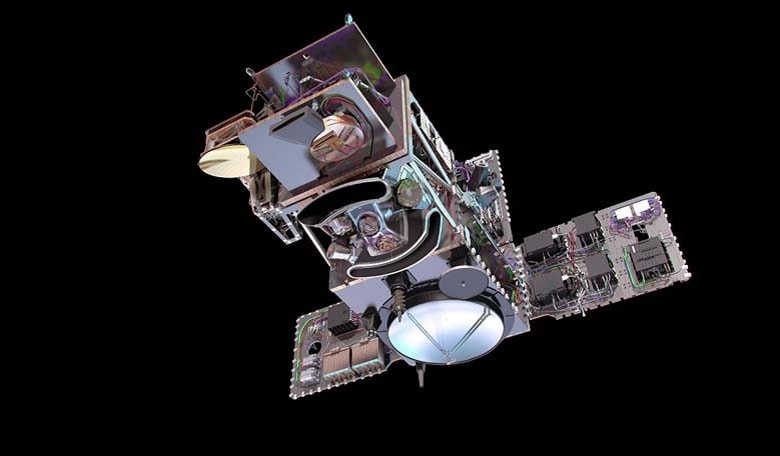The third Sentinel satellite for the Copernicus Programme, Sentinel-3A, will be launched from the Russian Plesetsk Cosmodrome at 17:57 GMT today. Sentinel-3A carries a suite of sophisticated instruments that will measure Earth’s oceans, atmosphere, land and ice providing essential information in near-real time for ocean and weather forecasting as part of Europe’s revolutionary Copernicus programme.
Copernicus is the most ambitious Earth Observation programme to date and is headed by the European Commission (EC) in partnership with the European Space Agency. It will provide accurate, timely and easily accessible information to improve the management of the environment, understand and mitigate the effects of climate change and ensure civil security through its suite of Sentinel satellites.
Bruno Berruti, ESA’s Sentinel-3A project manager said, “after years of hard work developing the mission, we all felt very emotional watching our satellite being encapsulated in the fairing knowing that that was the last time we’ll see it. But this is what we’ve been working for – to get this latest Copernicus satellite into orbit and working for the benefit of European citizens, and in fact, users worldwide.”
Once Sentinel-3A is operational, the satellite will systematically measure Earth’s habitat and environment with a suite of cutting-edge instruments. “Although we still have the launch to get though, which is always a nail-biting time, we are very proud to see everything now almost ready on the launch pad – and this is all thanks collaboration between ESA, the EC, Eumetsat, France’s CNES space agency, industry, service providers and data users,” continued Berruti.
Sentinel-3A is considered a special case in this suite of Copernicus satellites as the mission is managed by both ESA and Eumetsat, with ESA being responsible for all of the land products, while marine products are being dealt with by Eumetsat. The design of Sentinel-3A has also met with some interesting challenges, as the satellite is equipped with three main instruments to capture a variety of different data that will be available in different time lines. Some data for example will be supplied three hours after sensing and this is known as near real-time. Other data that is more consolidated can take much longer to be delivered depending on how the data is averaged spatially and temporally in order to get the best information out.
This workhorse mission will deliver data 24 hours a day, 365 days a year and while this data will be fed primarily into the Copernicus Marine Environment Monitoring Service, all the Copernicus services will benefit to produce knowledge and information products for a wide range of applications. Sentinel 3 is designed to monitor mean sea-level data, marine biology and sea-surface temperature amongst other things, while for land-based data, vegetation, agricultural applications and water resource management (by monitoring the heights of rivers and lakes) will be remotelysensed and recorded.
Understandably, with such a staggering amount of data to be collected over such a wide extent, those involved in this operation are eagerly awaiting to see a successful launch. “We’ve practised all phases of the flight during more than 25 ‘sim’ sessions, including when everything goes according to plan, and when anomalies or system failures occur,” says satellite operations manager José Morales. “Sentinel-3A will present us with a classic set of challenges to get it through the launch and early orbits. Everything has to happen just right, in the right sequence and at the right time.”
In addition, the design of the altitude control system means it could take up to four hours after separation from the launcher to fully stabilise the satellite. “We also have limited battery time, about five hours, and we have to ensure a power-positive status within this timeframe,” says Pier Paolo, who serves as flight director for all the Sentinel missions controlled from ESOC.
The satellite will be flown by ESA until the instruments are commissioned – expected in about five months. It will then be transferred to Eumetsat, the European organisation for the exploitation of meteorological satellites, for routine operation.
There are two satellites for each Sentinel mission, A and B, flying in the same orbit and Sentinel-3B is expected to join Sentinel-3A in orbit by next year, providing a revisit time over almost any point on Earth of under two days for this mission’s crucial optical-sensing instruments.











